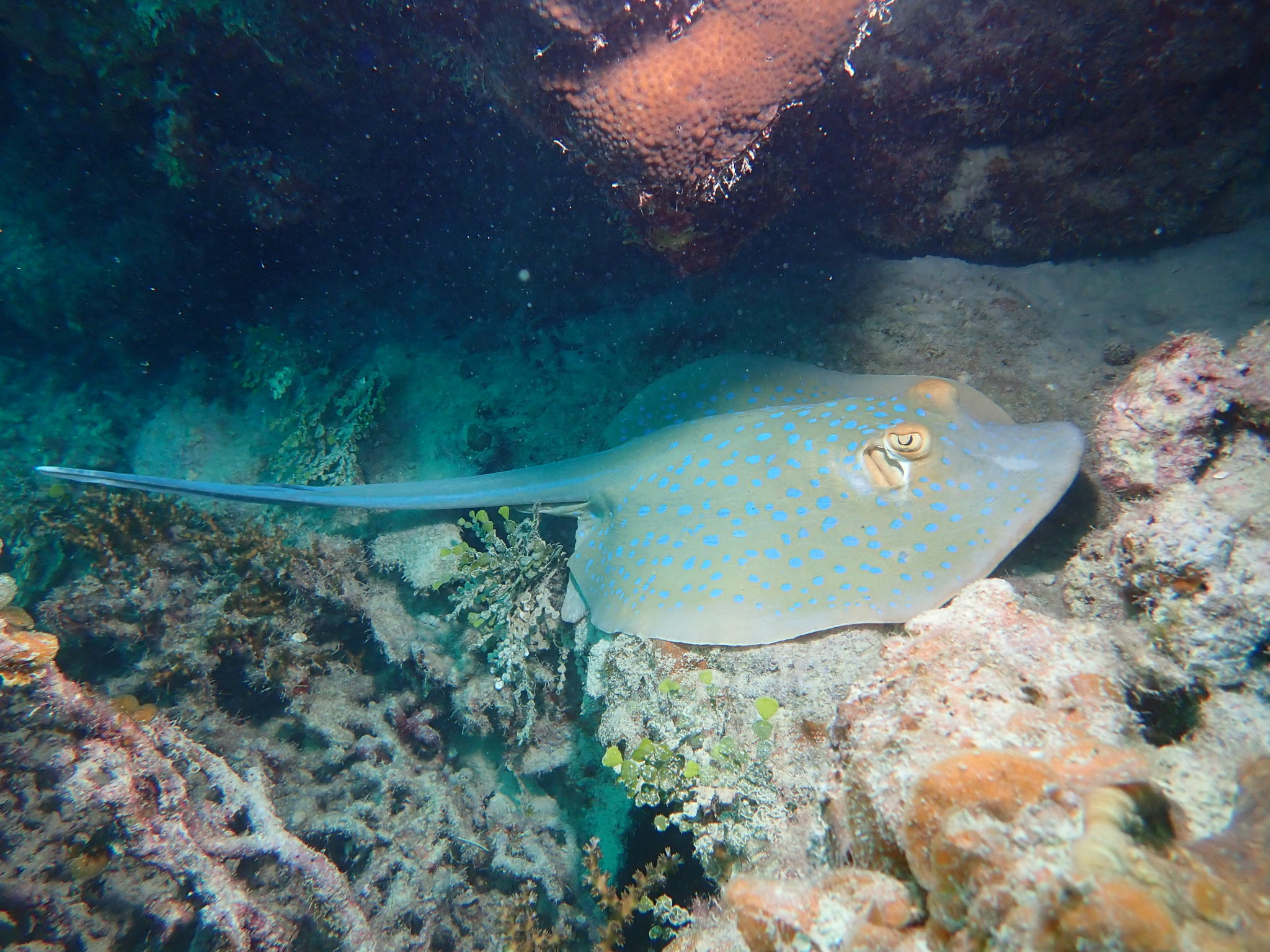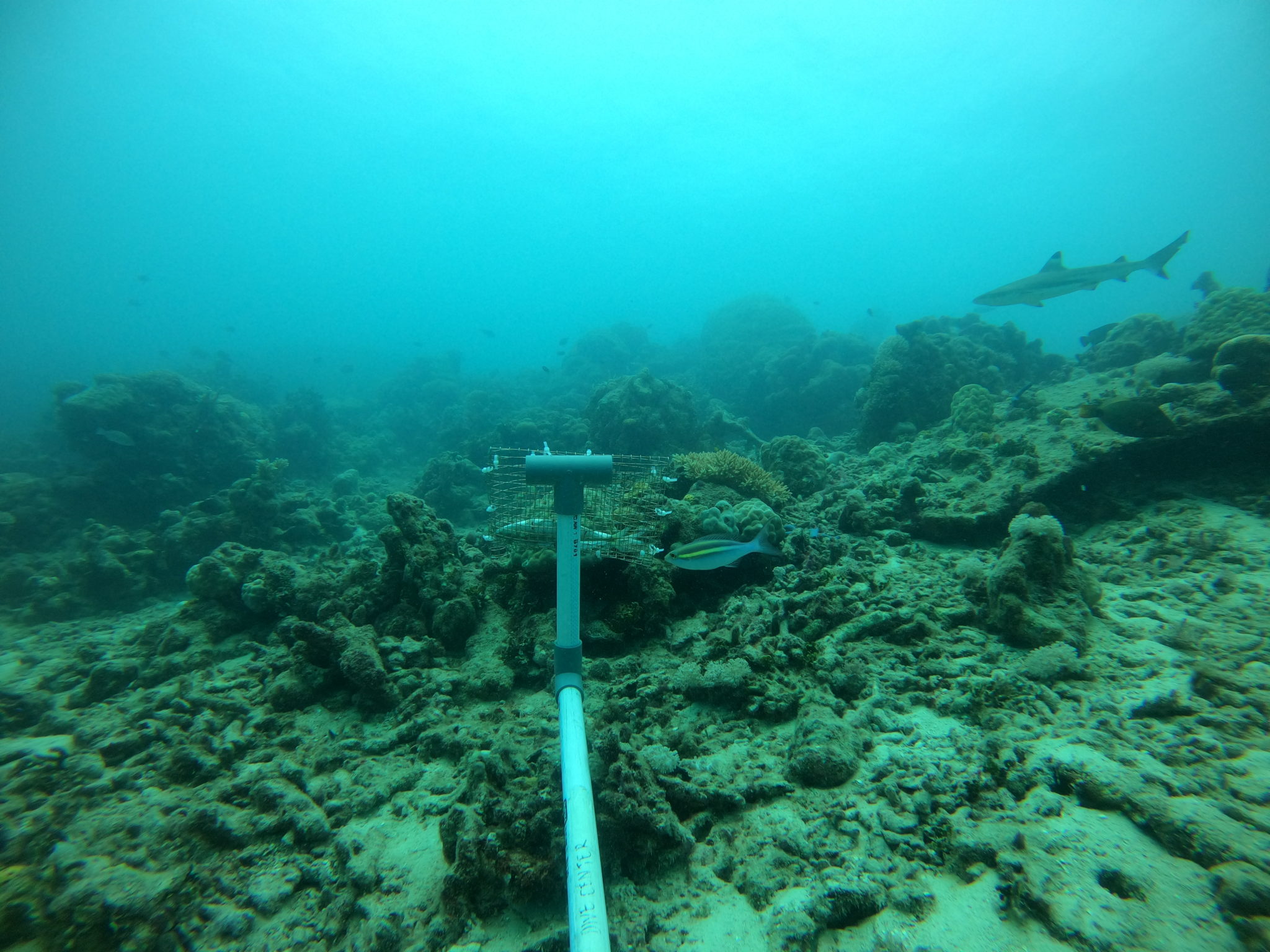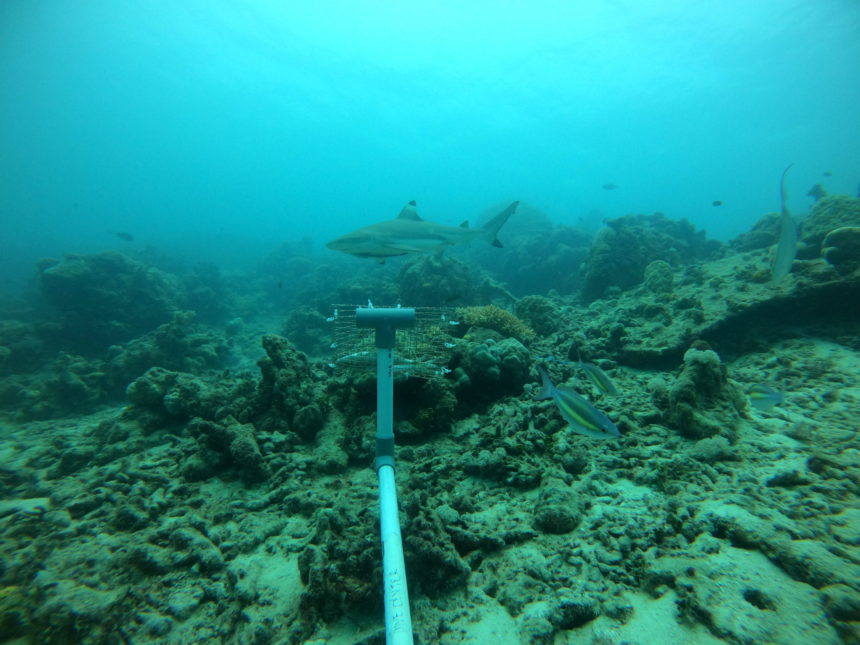Should humans be scared of sharks and rays? Or should these marine animals fear us? Sharks do look scary with their menacing teeth and stares, and rays with their whip-like tails. But despite their intimidating appearances these two animals actually do not like to bother humans, let alone thinking of us as their prey.
It’s quite the contrary actually, it’s us humans that have killed off some shark and ray species and are continuously threatening their existence in the world.
On a global scale, there’s an ongoing global decline of oceanic shark and ray populations over the past 50 years, with 77% of both animals now qualify as threatened with extinction under the Red List criteria of the International Union for Conservation of Nature (IUCN)[1].
In Indonesia, our oceans have a high diversity of sharks and rays, however, their populations are continuously decreasing due to overexploitation, be it through targeted fisheries or incidental catches, and habitat destruction[2]. Even more alarming, shark fishing is still allowed in Indonesia; the country does not have a law banning the catch of some endangered marine species, as long as it is only for domestic consumption[3]. If we don’t do something about it, it will only accelerate their population decline and throw the marine ecosystem out of balance. As apex predators, both sharks and rays control the populations of prey and keep the oceans healthy by eliminating the sick and weak animals[4].

It is important for us as a non-profit organization to do conservation work that also protects these animals and to push for conservation laws to the local government. However, very little is known about the diversity and abundance of sharks and rays populations in the Anambas Islands at the moment. The lack of information has then prompted us to do research in Kiabu and Bawah Island.
The marine conservation team at Bawah was the first to initiate the research in 2020. Their research method of choice was Baited Remote Underwater Video (BRUV) system, a common fish-surveying method requiring a GoPro camera mounted on an aluminum frame with an extended arm for the bait and then placed on the seafloor. BRUV is a very effective system, especially in marine protected areas as it is not threatening to shy species like sharks or rays, can record data at a depth of more than 20 meters and in difficult areas that can’t be reached by divers[5].

Some of the early images the Bawah team caught were that of blacktip reef sharks (carcharhinus melanopterus)[6]. As the name suggests, blacktip reef sharks are easy to spot because of the recognizable black tips on their fins[7]. They are medium-sized requiem sharks that can grow up to 200cm and need four to five years to reach adulthood[8]. This viviparous animal has a gestation period of up to 16 months and the female sharks give birth to two to four pups every two years. They can be found swimming in shallow reef areas, they are not aggressive but are sometimes curious when they sense divers near them.
Due to their habitat that’s close to coastlines, they are under constant threat of coastal development that disrupts their feeding and nursery grounds. Currently, the blacktip reef sharks are not protected under national law, Raja Ampat is the only province in Indonesia that protects their population through the issuance of Raja Ampat Regional Regulation No 9 Year 2012 on Prohibition of Fishing Sharks, Manta Rays and Certain Types of Fish in the marine waters of Raja Ampat Regency.
After learning about the presence of blacktip reef sharks in Bawah, the marine conservation team that’s based in Kiabu will also do the same research using BRUV and will focus on data collection of sharks and rays in and around Kiabu Island. Both Kiabu and Bawah are the perfect locations to do this research as they represent the different zones of the Anambas Marine Tourism Park (TWP) namely the tourism zone, rehabilitation zone, core zone and sustainable fisheries zone.
By doing this research we can get better insight into the Anambas Islands’ marine ecosystems, data collected will serve as the basis for future sharks and rays conservation work and can also help the local government in creating regulations that can better protect marine life in Anambas.
Sources:
[1] https://www.iucnssg.org/press/oceanic-sharks-and-rays-face-unprecedented-extinction-risk-from-overfishing
[2] Fahmi & Dharmadi. 2013. Tinjauan Status Perikanan Hiu dan Upaya Konservasinya di Indonesia. Direktorat Konservasi Kawasan dan Jenis Ikan. Direktorat Jenderal Kelautan, Pesisir dan Pulau-Pulau Kecil. Jakarta.
[3] https://news.mongabay.com/2020/05/as-covid-19-response-batters-sales-indonesias-shark-fishery-gets-a-respite/
[4] Stevens, J., R. Bonfil, N. Dulvy and P. Walker. 2000. The Effects of Fishing on Sharks, Rays, and Chimaeras (Chondrichthyans), and The Implications for Marine Ecosystems. ICES Journal of Marine Science., 57:476 – 494.
[5] Rigby, C., Appleyard, S., Chin, A., Heupel, M., Humber, F., Jeffers, V., Simpfendorfer, C., White, W., I Campbell. 2019. Rapid Assessment Toolkit for Sharks and Rays. WWF International and CSTFA, James Cook University.
[6] https://www.fishbase.se/summary/877
[7] https://www.sharks.org/blacktip-reef-shark-carcharhinus-melanopterus
[8] https://www.safariltd.com/safaripedia/blacktip-reef-shark

